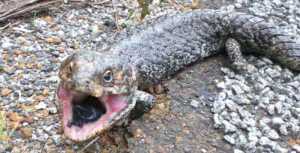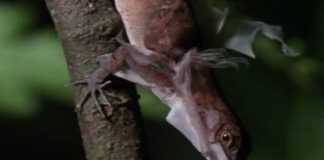The Shingleback Lizard might be known for its extreme slowness, hence the other name it has: The Sleeping Lizard, but a new study shows that it might be one of the first animals to warn us of pollution.
Scientists from the University of Sydney have managed to show that the Shingleback Lizard, as well as similar indicator species, could essentially warn us of the impact of agricultural chemicals on plants, people and wildlife.
The scientists examined two groups of Shingleback lizards: The first was close to an agriculture-intense area in southern Australia, while the other group was living in undeveloped rangelands. The findings revealed that while more than half of the Shingleback lizards living in the agriculture-intense area were anemic, no signs of anemia were found in the lizards living the undeveloped area.
Who is the Shingleback Lizard?
Known by its scientific name of Tiliqua rugosa, the Shingleback Lizard is a short-tailed, slow moving species of blue-tongued skink that is found in Australia. The Shingleback Lizard, which was first described by John Edward Gray in 1825, has an extremely heavy and armored body, in colors ranging from dark brown to cream. Despite its average length of 10 to 12 inch (26-31 cm), the Shingleback lizard is very heavy, and therefore called the “Sleeping Lizard”.

One of it’s unique body features is its wide and short tail that actually looks like its triangular head, and hence used as a defense mechanism to confuse predators. Some even call it the “two-headed skink”. Among the animals that are regarded as potential predators are foxes, cats, dingos and snakes. The Shingleback lizard is an omnivore that spends most of his time searching through vegetation, predominately eating snails, insects, flowers and plants, and even human food! Including chicken, fruits and sausages.
What caused the Anemia?
Back to the study conducted in Australia, according to the scientists, it’s most likely the large range of fertilizers and chemicals that the lizards were exposed to in the agriculture-intense areas, that are the cause of the high rate of anemia. If the Shingleback Lizard is affected by these chemicals, it most probably means that other animals and even humans may be at risk. However, it’s still not clear which exact chemical is causing the anemia.
The most important element coming out of the study, is the identification of a specific animal that can practically warn us of the ever-growing dangers of man-made pollution.
If you wish to read the entire study, it was published in the Journal Royal Society Open Science.


